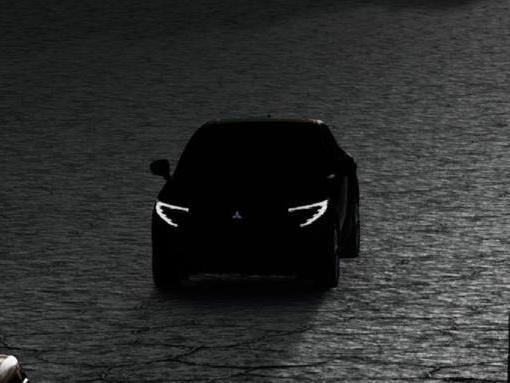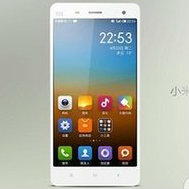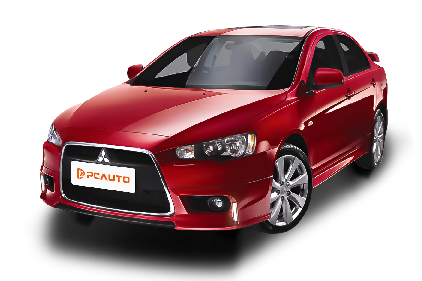Q
Is the 2016 Mitsubishi Lancer good in the snow?
How the 2016 Mitsubishi Lancer handles in snow really comes down to how it's kitted out. If you've got the all-wheel drive (AWD) version paired with winter tires, you'll definitely notice a big step up in stability when things get snowy. The AWD system does a solid job of shuffling power between all four wheels, and winter tires—with their deeper treads and that special rubber compound—really dig in for better grip. But if you're rolling on a front-wheel drive model with all-season tires? You'll want to take it easy. Slow down, and avoid slamming on the brakes.
Now, for our readers in Malaysia, I get it—snow isn't exactly a regular thing here. But understanding how a car behaves in different conditions is still useful. Think about those rainy season downpours when roads get slick; the same logic applies. Swapping in the right tires and keeping good driving habits go a long way. Oh, and don't sleep on regular brake checks and keeping your tire pressure dialed in—those small things make a big difference for safety.
As an affordable daily driver, the Lancer's mechanical reliability holds up pretty well across different climates. But let's be real—extreme conditions still call for the right setup and some smart driving moves.
Special Disclaimer: This content is published by users and does not represent the views or position of PCauto.
Related Q&A
Q
Does the 2016 Mitsubishi Lancer have a rearview camera?
The 2016 Mitsubishi Lancer did come with a rearview camera on some of its higher-spec trims in the Malaysian market, especially the GT and GT Premium variants. Back then, this was a really practical safety feature that gave drivers a clearer view of what was behind them when reversing, which was super helpful. It's worth keeping in mind that specs can vary by region, though. If you're a owner, your best bet is to check the vehicle settings menu, flip through the owner's manual, or just give a Mitsubishi authorized dealer in Malaysia a call to get the exact lowdown on your car's features. These days, rearview cameras are pretty much standard on most new cars, and they often work hand-in-hand with parking sensors to cut down on blind spots—something that's especially useful for those tight parking spots you often find in Malaysia. If your Lancer didn't come with one from the factory, you might be thinking about adding an aftermarket one. Just make sure you go through a reputable auto parts shop, though. It's crucial that any modifications meet JPJ regulations, and you'll want a good-quality unit that's compatible with your car's system to avoid voiding any warranties.
Q
What is the difference between the 2016 Lancer ES and GT trim?
The key differences between the 2016 Mitsubishi Lancer ES and GT variants lie in their equipment and performance. As the entry-level trim, the ES comes with a 1.6L MIVEC engine (117 hp), paired with either a 5-speed manual or CVT gearbox. It rolls on standard 16-inch steel wheels and features manual air conditioning plus a basic audio system, focusing squarely on affordability and practicality. Step up to the GT, and you're looking at a more potent 2.0L MIVEC powerplant (148 hp), mated to a CVT with paddle shifters. Externally, it gets sportier styling with 18-inch alloy wheels and body kits, while the cabin ups the ante with a leather-wrapped steering wheel, keyless entry, automatic climate control, and a premium Rockford Fosgate sound system. Safety-wise, the GT also adds side airbags and vehicle dynamic control.
For Malaysian buyers, the GT trim is better suited for those seeking driving enjoyment and enhanced features – its retuned suspension, in particular, handles our diverse local road conditions more capably. It's worth noting that the Lancer holds strong resale value in the used car market here, with the GT variant being especially popular thanks to its higher spec. If you're eyeing a pre-owned model, make sure to check the CVT transmission's service history thoroughly – that's a critical maintenance point for this model in our tropical climate.
Q
What is the safety rating of the 2016 Mitsubishi Lancer?
The 2016 Mitsubishi Lancer scored a 4-star safety rating from ASEAN NCAP, based largely on its stable body structure, dual front airbags, and standard ABS brakes. While that covers the basics, it falls a bit short compared to some contemporary rivals that bagged 5-star ratings with features like six airbags or active safety tech such as automatic emergency braking.
In the Malaysian market, the Lancer's passive safety still holds up for daily driving. Its RISE anti-collision body design does a decent job of dispersing impact forces, which is good. But here's the thing: side airbags and Electronic Stability Control (ESC) aren't standard. If you're after extra protection, looking into third-party safety accessories might be a smart move.
It's worth noting that ASEAN NCAP's testing focuses more on Southeast Asian road conditions, with tests like the 40% offset crash and pedestrian protection. It's not quite as comprehensive as Euro NCAP, so I'd definitely recommend checking out the detailed report on their official website before buying and weighing it against your own driving habits.
If your budget stretches further, the Toyota Corolla or Honda Civic from the same era probably offer more in terms of active safety kit. But the Lancer still has its appeal, especially with its lower used car prices – it's a solid value pick for Malaysian buyers who prioritize practicality.
Q
How to connect bluetooth to 2016 Mitsubishi Lancer?
So, you want to pair your phone with the Bluetooth in a 2016 Mitsubishi Lancer? No sweat. First, fire up the car and make sure that center display is on. Once you're on the main menu, look for either "Settings" or just straight-up "Bluetooth" – it's usually pretty easy to spot. Dive into that, then flip on the Bluetooth function and make sure the car is set to be discoverable by other devices.
Now grab your phone, head into its Bluetooth settings, and scan for nearby devices. The Lancer's system should pop up, probably labeled something like "Mitsubishi" or "Lancer" – pretty straightforward. Tap to connect, and it'll ask for a passcode. The default's usually something simple like "0000" or "1234" – check your owner's manual if those don't work, but they're the usual suspects. Once it pairs up, you're golden – stream your tunes, take calls hands-free, all that good stuff.
If you hit a snag – like it won't connect or keeps dropping – try giving both the car's system and your phone's Bluetooth a quick restart. And hey, do all this while the car's parked, yeah? Safety first when messing with settings.
Bluetooth is pretty much standard in cars these days, right? Beyond just music, a lot of rides (including some Lancers, depending on trim) let you make calls directly through the system or even use voice commands. Pro tip: keep your phone's OS and the car's infotainment software updated. It helps with compatibility and keeps everything running smooth. And most importantly, once you're rolling, keep your eyes on the road – don't fiddle with the Bluetooth controls too much. Distracted driving's no joke.
Q
What size engine is in the 2016 Lancer?
The 2016 Mitsubishi Lancer hit the Malaysian market with two engine choices: 1.6L and 1.8L naturally aspirated four-cylinders. The 1.6L (code-named 4A92) cranks out 113 hp and 149 Nm of torque, while the 1.8L (4B10) steps things up to 139 hp and 172 Nm. Both mills pair with either a CVT automatic or 5-speed manual, depending on trim, focusing on fuel efficiency and smooth driving dynamics. For Malaysian buyers, these engine options make the Lancer a solid pick for daily commutes and family use. The 1.6L shines in city traffic with its better fuel sipping, while the 1.8L delivers more punch for highway jaunts. It’s worth noting that while naturally aspirated engines don’t pack the same punch as turbos, they’re cheaper to maintain and time-tested reliable—perfect for folks who value long-term dependability. On top of that, the Lancer’s suspension is tuned for comfort, handling Malaysia’s varied road conditions like a champ, whether you’re navigating city streets or logging highway miles.
Q
Do Mitsubishi Lancers 2016 have CVT transmission?
The 2016 Mitsubishi Lancer was equipped with a CVT automatic transmission in the Malaysian market. That was Mitsubishi's main transmission technology back then, aimed at improving fuel economy and enhancing driving smoothness – perfect for all the frequent stop - and - go situations you get in city traffic.
How does a CVT work? It uses a steel belt and pulleys to give you that seamless, "stepless" acceleration, which lets the engine work more efficiently compared to a traditional automatic transmission with a fixed number of gears.
Now, it's worth mentioning that Lancer specs could vary a bit from one market to another, but in Malaysia, the 2016 model was mainly offered with the CVT. I think some trim levels might have still had a manual gearbox as an option, for drivers who prefer manual gear shifting.
For Malaysian drivers, the CVT in the Lancer performs reliably in the hot weather and those heavy traffic jams. Plus, maintenance costs are relatively low. But here's the thing, you must remember to change the CVT fluid regularly with the right stuff. That's key to keeping it running strong for the long haul.
If you're looking at a used Lancer, it is advisable to get a professional to check the transmission properly. And definitely ask to see the service records from the original owner. It'll give you peace of mind knowing the gearbox has been looked after.
Q
How to connect phone to Mitsubishi 2016?
Connecting your phone to a 2016 Mitsubishi is straightforward, but first, make sure your specific model supports either Bluetooth or USB connectivity. Most 2016 Mitsubishi models like the ASX, Triton, and Outlander come equipped with both options. For Bluetooth pairing, start by turning on your phone's Bluetooth, then head into your car's settings menu and select "Bluetooth Devices." Search for available devices, pick your phone, and follow the prompts to complete pairing—some models might ask for a PIN, usually "0000" or "1234."
If you prefer USB, just plug your phone into the car's USB port using the original charging cable. The system should automatically detect it, letting you use features like screen mirroring or charging. A few models even support Apple CarPlay or Android Auto, but you'll need to enable those settings on your phone first.
Pro tip: Keep your car's infotainment system updated to avoid compatibility headaches. If you run into connection issues, try restarting your phone or the car's system—it usually fixes minor glitches. For our friends in Malaysia, remember that the hot weather can cause phones to overheat, which might mess with connectivity. Keep your phone in a well-ventilated spot to prevent that.
Mitsubishi's infotainment systems are designed with everyday usability in mind—simple interfaces that don't overcomplicate things. If you need model-specific details, check your owner's manual or reach out to an authorized Mitsubishi service center in Malaysia for help.
Q
Is 2016 Lancer AWD?
The 2016 Mitsubishi Lancer didn't come with an all-wheel drive (AWD) option in the Malaysian market. It was strictly front-wheel drive (FWD), which is pretty standard for most compact sedans in its class. As a practical, budget-friendly family car, the Lancer's FWD setup struck a decent balance between fuel efficiency and everyday drivability – perfect for city commutes and those longer highway trips.
If AWD is a must-have for you, Mitsubishi's got other options in their lineup, like the Outlander or ASX. Those SUVs do offer AWD here in Malaysia, which comes in handy for slippery roads or light off-road adventures. Just keep in mind, while AWD does boost stability in tricky conditions, it typically adds a bit to your fuel bill and maintenance costs too. So, it really boils down to weighing up what you'll actually use the car for.
Malaysia's tropical climate and rainy weather might pique some drivers' interest in AWD, but honestly, a regular FWD Lancer with good tires and electronic stability control should handle most daily driving scenarios just fine.
Q
What kind of battery does a 2016 Lancer take?
The 2016 Mitsubishi Lancer in the Malaysian market typically comes fitted with a 12-volt lead-acid battery. Specifically, you're looking at either the 46B24L (for the 1.6L and 1.8L variants) or the 55D23L (for the 2.0L model). Both are maintenance-free (MF) batteries, boasting decent longevity and reliable performance – perfect for Malaysia's hot and rainy weather. When it's time for a replacement, stick with reputable brands like Yuasa, Bosch, or Panasonic. These names have solid reputations locally and usually offer good after-sales support. Also, make it a habit to check your battery's condition regularly – things like voltage and electrolyte levels – and ensure your charging system is working properly. That'll go a long way in extending its life. If your Lancer has a start-stop system, you'll need a dedicated AGM or EFB battery to keep everything compatible. A quick heads-up though: battery specs can sometimes vary slightly between different years or trim levels of the Lancer, so it's always smart to double-check your owner's manual or chat with a professional mechanic to confirm the exact battery you need before making a purchase.
Q
How big is the gas tank on a 2016 Lancer?
The 2016 Mitsubishi Lancer comes with a 59-liter fuel tank, which sits comfortably above the mid-range for its class. That's a solid size that translates to decent driving range – perfect for Malaysian drivers who want fewer stops at the pump, whether it's for daily commutes around town or longer highway trips. As a tried-and-true family sedan, the Lancer already boasts pretty good fuel economy, so pairing that with a 59L tank is a smart combo that helps keep running costs in check. Let's face it, petrol prices in Malaysia aren't exactly cheap, so picking a car with a well-sized tank and good fuel efficiency is a big deal – and the 2016 Lancer balances both nicely. Oh, and don't forget: keeping up with regular maintenance checks on your tank and fuel system is key to making your car last. Stick to the manufacturer's recommended service schedule, and you'll keep that fuel system clean and working at its best.
Popular Cars
Model Year
Car Compare
Car Photo
Latest Q&A
Q
How much did a new 2018 beetle cost?
The 2018 Volkswagen Beetle had a starting price range of approximately RM120,000 to RM180,000, depending on the trim and options. The entry-level 1.2 TSI Design model was the most affordable, while the top-spec 2.0 TSI R-Line version approached RM180,000—though final pricing could vary with optional extras and dealer promotions.
As a timeless classic, the 2018 Beetle kept its retro charm but packed modern tech like a touchscreen infotainment system and active safety features. Under the hood, buyers could choose between the fuel-efficient 1.2T or the more spirited 2.0T engine.
Fair warning: Volkswagen discontinued the Beetle in 2019, so you’ll only find it on the used market now. That said, its iconic design and nostalgic appeal still make it a hit among collectors. If you’re eyeing a pre-owned model, always check the vehicle history and maintenance records to snag a solid deal.
Q
What engine does a 2018 VW Beetle have?
The 2018 Volkswagen Beetle offered two gasoline engine options across different markets. The primary powerplant was a 1.2-liter TSI turbocharged inline-four, delivering 105 horsepower and 175 Nm of torque, paired with a 7-speed DSG dual-clutch transmission. This compact forced-induction engine struck a balance between urban fuel efficiency and strong low-end torque.
Higher-spec variants featured an optional 1.4-liter TSI turbocharged unit, bumping output to 150 horsepower. Both engines adopted direct fuel injection and belonged to VW’s widely used EA211 modular family, featuring modern tech like lightweight aluminum blocks.
Though retaining its iconic silhouette, this generation Beetle actually shared its underpinnings with the Golf, inheriting the brand’s proven front-wheel-drive architecture. This platform commonality also translated to easier maintenance, as local dealerships were well-versed in servicing these powertrains thanks to extensive parts sharing across VW’s lineup.
Q
What are the different models of the 2018 VW Beetle?
The 2018 Volkswagen Beetle comes in three main trims: Classic, Trendline, and Sport. All models are powered by a 1.2-liter TSI turbocharged engine delivering 105 horsepower, paired with a 7-speed DSG dual-clutch transmission—perfect for city driving with its nimble handling and solid fuel efficiency.
The entry-level Classic trim rolls on 16-inch wheels and features a basic multimedia system. Stepping up to the Trendline adds 17-inch wheels, fog lights, and chrome accents. The Sport trim leans into its name with 18-inch wheels, a sport-tuned suspension, and unique interior color options.
This generation keeps the Beetle’s iconic retro curves but modernizes them with touches like LED daytime running lights. Inside, you’ll find color-matched dash panels, and with 310 liters of trunk space, it’s more practical than most small cars in its class.
Since the Beetline was discontinued in 2019, the 2018 model stands as the last new generation, making it a rising collector’s item—especially the convertible, which holds strong appeal in the used market. For maintenance, stick to routine service every 15,000 km or 12 months, and regular 95-octane fuel is all it needs.
Q
Does the 2018 Beetle have Apple CarPlay?
The 2018 Volkswagen Beetle did come equipped with Apple CarPlay, integrated into its Composition Media infotainment system. This allowed iPhone users to seamlessly connect for navigation, music, and other apps. The system also supported Android Auto, catering to different smartphone users with its intuitive and responsive interface—definitely a plus for convenience on the road.
That said, some early-production 2018 models might require a software update to activate the feature, so it’s worth checking with an official dealer to confirm your car’s specs or available upgrades. Also, wireless Apple CarPlay wasn’t standard across all trims; it depended on the factory-installed options.
For fans of classic styling who still want modern tech, the Beetle struck a nice balance between retro charm and everyday usability. Competitors like the Mini Cooper offered similar connectivity, but let’s be honest—the Beetle’s iconic design was always its standout feature.
Q
What is the fuel economy of the 2018 Beetle?
The 2018 Volkswagen Beetle's fuel efficiency varies by powertrain. The 1.2L TSI turbocharged version delivers a combined fuel consumption of around 5.5L/100km, while the 1.4L TSI model is slightly thirstier at approximately 6.0L/100km – both perform best with 95-octane petrol.
You'll likely see higher consumption in city driving, but it cruises efficiently on highways thanks to its classic aerodynamic design. For better mileage, stick to routine maintenance like cleaning the air filter and keeping tyres properly inflated. These small habits can help squeeze out extra kilometres per litre.
Though discontinued, the 2018 Beetle remains popular in the used car market – its iconic styling and decent fuel economy make it a practical daily driver. Just remember real-world figures depend heavily on driving style and road conditions, so check owner forums for real-life feedback.
View MoreRelated News

Mitsubishi Lancer Evolution might be resurrected, so what will the new Evo look like?
WilliamNov 14, 2025

Choose Honda HR-V or Mitsubishi XPANDER for a family car?
WilliamNov 12, 2025

Toyota HiAce and Mitsubishi Outlander upgraded to receive five-star safety rating
WilliamSep 24, 2025

Mitsubishi Cuts Full-Year Profit Forecast by 30%, Challenged by US Tariffs and Intensified Global Competition
Kevin WongAug 28, 2025

Mitsubishi to Launch Electric Vehicle Based on Nissan Leaf in Second Half of 2026
LienMay 8, 2025
View More


















Pros
Cons